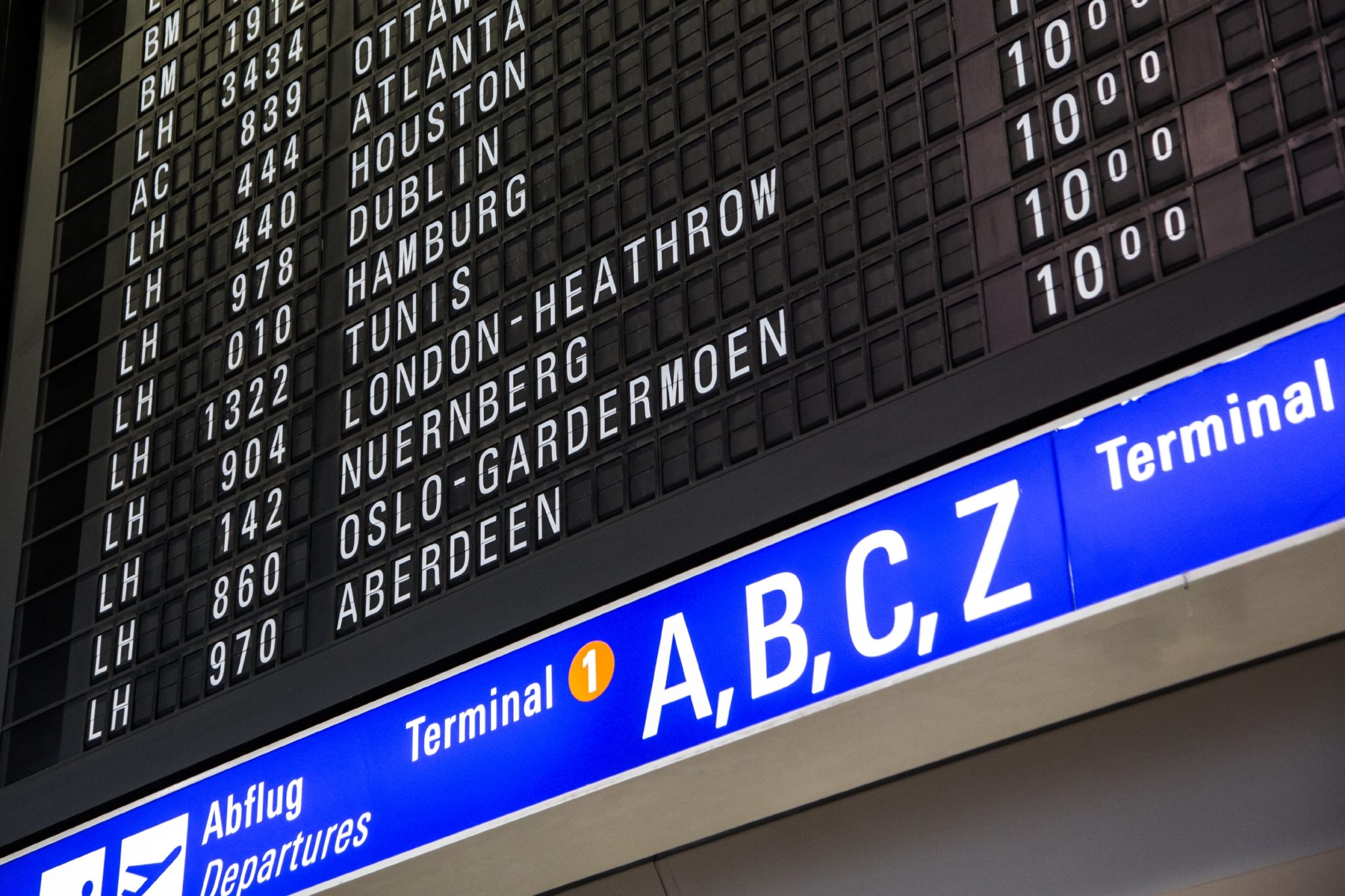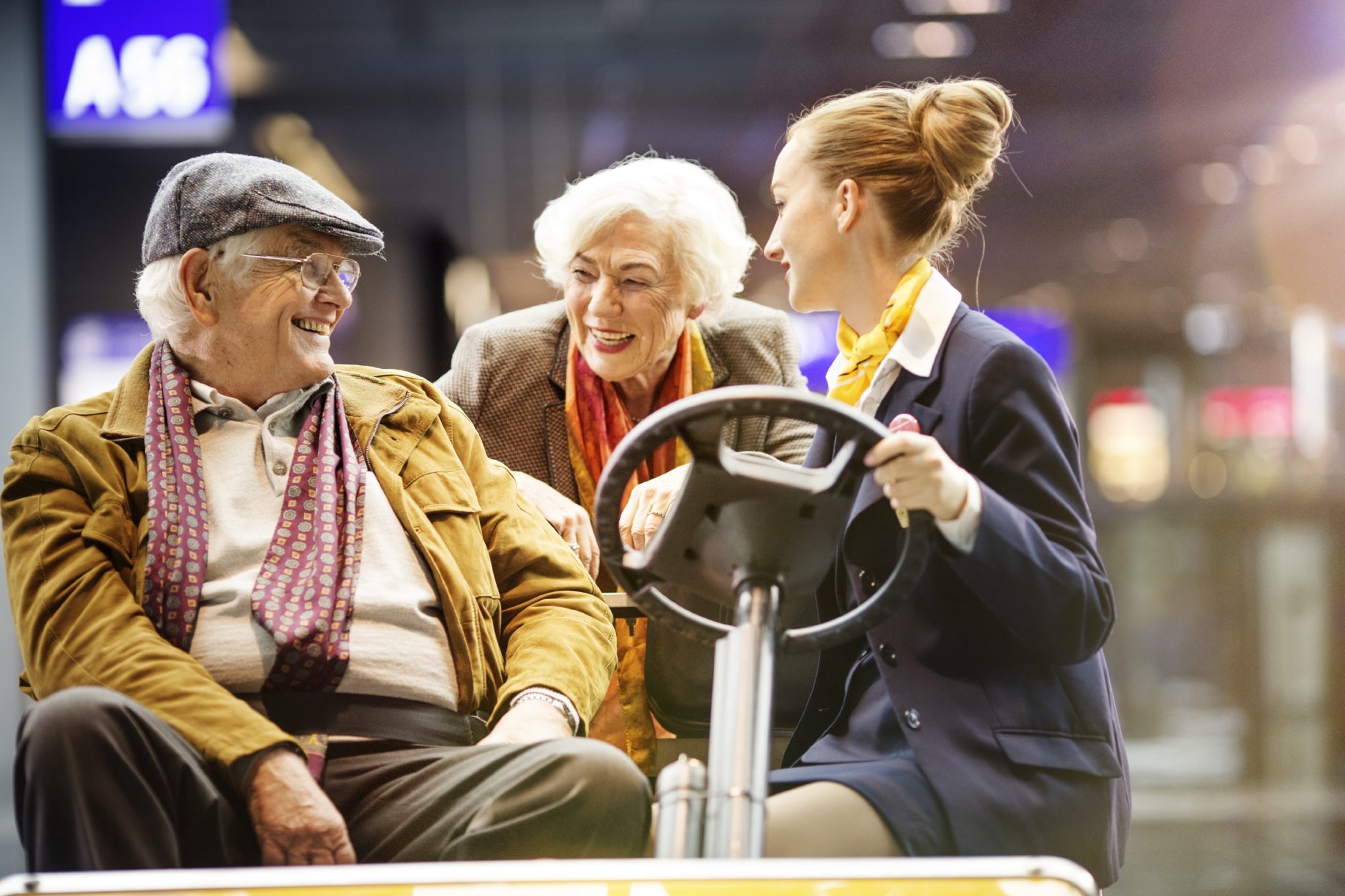A commonly quoted industry statistic is that one in every 100 air travel passengers requires assistance either at the airport or on the aircraft. Yet the number of passengers who are living with long-term disabilities, rather than temporary injuries or age-related restrictions, is around one fifth of one percent, says the German airline Lufthansa.
Passengers with reduced mobility are split into three initial codes in increasing levels of assistance required: WCHR for passengers who are unable to walk long distances, WCHS for passengers who are unable to use stairs, and WCHC for passengers who are unable to walk at all. The codes are designated by airline trade group IATA.
“A little under one percent of our passengers use these codes, defined as passengers with reduced mobility,” Lufthansa’s manager for passenger processes & passenger technology, Ute Marcotte-Luther, tells Runway Girl Network. “Over eighty percent of those are WCHR, meaning they are generally healthy, elderly people who cannot walk long distances. If we drop it down to people seated in wheelchairs, or people who are blind or deaf, we’re getting to a figure that is so small it can hardly be noted any more.”
Marcotte-Luther, who meets regularly with organisations promoting rights and accessibility for disabled people, notes that “it’s often a disappointment to the disability organisations that we’re legally bound by law to assist mostly people who, in our everyday understanding, are not disabled.”
That law, for Lufthansa and other European airlines, is harmonised across the European Union as EU Regulation 1107/2006, on the ‘Rights of people with reduced mobility — air travel’.
“In 2007,” on adoption of the regulation, Marcotte-Luther explains, “the responsibility to care for passengers with a disability on the ground until they have boarded the aircraft was taken away from the airlines and handed over to the airports. Frankfurt is still an exception, because Lufthansa in Frankfurt and Munich has always had its own special care team, so in Frankfurt we started a unit between Fraport, the owner of Frankfurt Airport, and that company is called FraCareS.
“Elsewhere in Europe, you have to ask the airport who the agency is who carries out this special service for people with disabilities. In the wider world, in Los Angeles or Delhi, say, it’s Lufthansa staff again.”

Lufthansa partners with the Frankfurt airport operator to deliver assistance at FRA. Image: Lufthansa
Whether the assistance is provided by an airport, airline or contract company, the information that the airline captures is standardised by IATA.
“As a standard, all the information should be the same,” Marcotte-Luther says. “If you’re travelling in a wheelchair and you can’t walk, no matter where you go — not just on the Lufthansa network, on all airlines worldwide — the airline must supply this service to assist you to get on board the aircraft, to be seated, and to help you from the seat to the restroom and back. It’s standardised, and works via IATA codes. These are standardised codes that go into the reservation.”
New codes are also created from time to time. In addition to Wheelchair, Blind, Deaf, and Deaf/Blind codes, 2008 brought the IATA code DPNA “a new code for disabled passengers in need of assistance, which means if a passenger has cognitive problems”, Marcotte-Luther explains. In addition, “we have SVAN, for service animal, most prominently for blind passengers travelling with a service animal, and since 2009 we have a code for emotional support animal, which the US DOT requires us to accept on board our aircraft.”
In terms of challenges, “the biggest problem for any airline is that the numbers keep increasing, and it’s not the numbers who are disabled, it’s more elderly people. We see an increase in total numbers, but not in percentage. Rather interestingly, although people keep getting older, a lot of these older people are still very active and very healthy. I’ve been monitoring this for a long time, and it’s nothing that we’re worried about because we see very little change. Our number increased from 0.7 to 0.8 percent of all passengers,” recently, Marcotte-Luther concludes.
And yet while individual flights may have a greater percentage — Marcotte-Luther notes that India flights in particular, for cultural reasons around care for senior citizens and owing to the amount of visiting-friends-and-relatives traffic, can see 100 wheelchair passengers — the overall proportion of passengers requiring mobility assistance is likely to remain stable.

European and international laws require that airlines and airports assist passengers with reduced mobility. Image: Lufthansa












